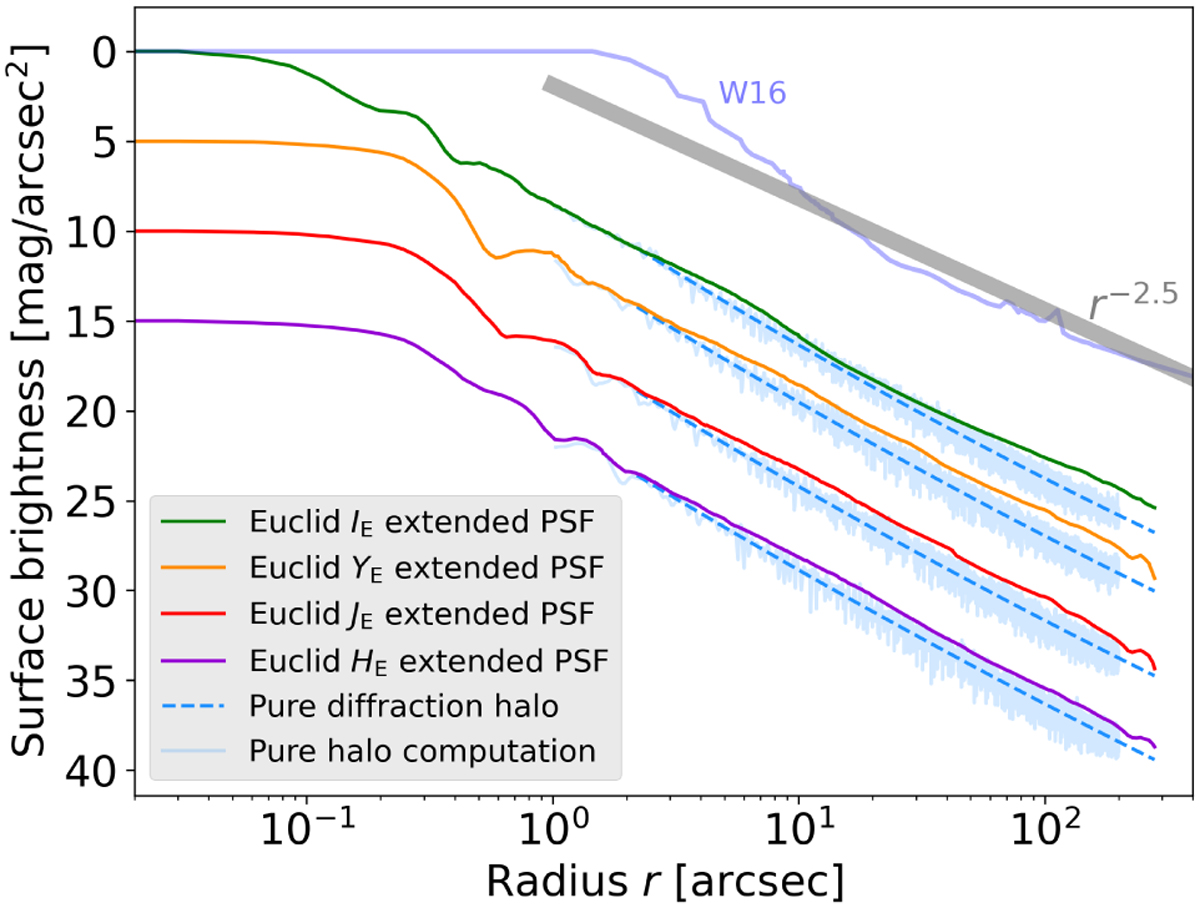Fig. 26

Download original image
Euclid’s extended PSF. The profiles across the four bands depicted with solid lines represent the stacked PSF, as detailed in Fig. 25, derived from ERO data. The IE-band is normalised to μ0 = 0, while the NISP YE, JE, and HE bands are visually separated by respective offsets of +5, +10, and +15 vertical units for clarity. The total magnitude of a star corresponding to each of the four profiles anchored at μ0 = 0 is IE = 3.1, YE = 1.6, JE = 1.5, and HE = 1.4 (it takes a brighter star in NISP to reach the same μ0 = 0 as VIS, which concentrates more energy in the core of the PSF, while the longer the wavelength, the poorer it becomes in the NIR). The simulation of the diffraction halo (Appendix D) is presented in pale blue, where the pale area represents the band-specific noisy computation profile and the dashed line indicates a second-order polynomial fit (an r–3 power law). This fit is aligned with the PSF at 2ʺ radius. The extended PSF concludes at 5ʹ radius, and its average slope shows only slight deviation from the theoretical model of a pure diffraction halo. This consistency underscores the exceptional quality of the optics, which appear to be free from particulate contamination. The three NIR extended PSFs are similar (constant offset between the purple, red, and orange profiles), but clearly contain more energy at large radii than the VIS extended PSF (the artificial 5 mag offset between the green and orange lines here quickly diminishes with radius). We represent in grey the median behaviour of all best wide-field LSB observatories reviewed by Liu et al. (2022) with an r–2.5 power law, shifted up to match our μ0 = 0, as originally done by Watkins et al. (2016). The specific extended V-band PSF of the Burrell Schmidt telescope is reproduced here (W16), as published in Watkins et al. (2016), limited to the range of this plot although it extends to a radius of 1°, ending at a surface brightness of 22.2 mag arcsec–2. This demonstrates that Euclid excels in minimising scattering of light, suppressing the extended wings better than the best ground-based optical telescopes by 8 magnitudes, and 6 magnitudes in the NIR, thereby opening a new observational window on the Universe.
Current usage metrics show cumulative count of Article Views (full-text article views including HTML views, PDF and ePub downloads, according to the available data) and Abstracts Views on Vision4Press platform.
Data correspond to usage on the plateform after 2015. The current usage metrics is available 48-96 hours after online publication and is updated daily on week days.
Initial download of the metrics may take a while.


